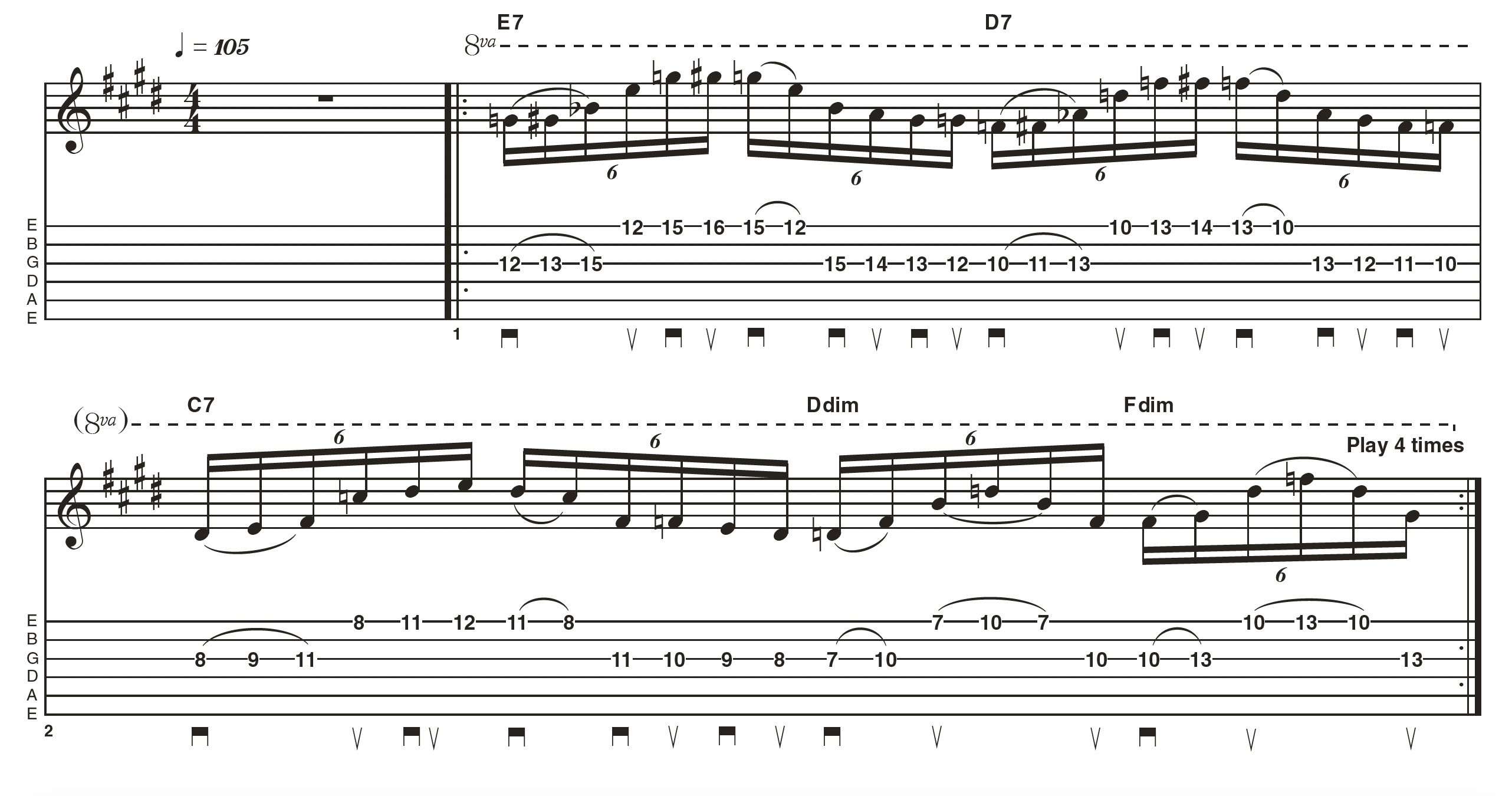Learn 5 ways to shred like Nuno Bettencourt with this lesson in Extreme guitar playing
Get the funk out with Nuno's formidable rhythm, tapping and alternate-picking licks

Nuno Bettencourt’s playing entered most late-'80s ears via Bill & Ted’s Excellent Adventure in which the Extreme song Play With Me appears. The song from their debut album featured a passage from Mozart’s Alla Turca, played with all the accuracy and swagger of more established players such as Vinnie Moore, Steve Vai and of course Yngwie Malmsteen.
In this lesson, we’ll take a look at some of the techniques that make up Nuno’s style, starting with a riff employing some 16th-note, palm-muted hammer-ons in the vein of Kid Ego, He Man Woman Hater and Midnight Express.
This percussive effect is surprisingly difficult to mimic, and the exact position and pressure of your palm on the strings will have a big impact on the sound. Aim to get the notes as even in volume as possible, with plenty of low end coming through.
The two-handed tapping arpeggios of Get The Funk Out and He Man Woman Hater are a thing of legend, so Example 2 is based on the Major add9 shape Nuno employs for these stunning string-skipping sounds.
Example 3 is based on the Rimsky Korsikov inspired Flight of the Wounded Bumblebee in which Nuno uses a delay effect in a similar way to Brian May’s Brighton Rock, but a lot faster. The delay timing is set so that it repeats a played note a dotted 8th, (or three 16th notes) later. So in our example, the initial 7th-fret note will repeat after the following 10th-fret note and so on, in a leap-frogging pattern which is incredibly effective.
Nuno’s use of odd groupings in his rhythmic phrasing is evident in the Hip Today solo, or the Cupid’s Dead riff fest section. This element seemed to become more prominent when drummer Mike Mangini joined the band and Example 4 will allow you to practise splitting up the typically even sounding 4/4 into something less obvious.
This lick uses a seven-note rhythmic phrase, which displaces itself against the 4/4 backbeat. Mathematically we have a total of 32 notes across the two bars, so we can fit four groups of seven 16th notes (28 in total), followed by an extra four notes at the end, which brings us to a total of 32. The cool thing about this is that the lick sounds more rhythmically interesting and syncopated against the 4/4 context of the song.
Our final example focuses on Nuno’s picking technique. His use of palm muting and general control over his tone often sounds like every note is picked whereas, in reality, he cleverly and imperceptibly incorporates legato and picked notes together. This string-skipping lick inspired by a typical descending sequence and will give you a window into how he pulls these ideas off.
Get the tone
Nuno is primarily a humbucking fan, and is well-known for using the Washburn ‘N’ series guitars that he helped to design. Although finding himself within the shred genre, Nuno’s lead tone is usually cleaner than you might expect, his funky approach requiring the fundamental of the note to ring through. Try the below amp settings then tweak to taste.
Amp settings: Gain 7, Bass 6, Middle 7, Treble 7, Reverb 3
Example 1

Play the A5 powerchord with your first finger at the 2nd fret and keep it there throughout, while using second and third fingers to play the riff. Keep your picking hand loose, and for the final two beats palm mute the strings while hammering on. Make your pick strokes and hammer-ons the same volume.
Example 2

Use your second finger to tap the 17th fret, then your third and fourth fingers of your fretting hand to hammer on from the 10th to the 12th fret.
Next move up to the third string and use first and fourth fingers to hammer on, followed by the same fingering on the first string. When descending use the second finger to hammer on from nowhere at the 10th fret.
Once you have these movements down, you can apply the same pattern to the different chord changes.
Example 3

This example uses a dotted eighth-note delay, or 321ms, set to one repeat. This fills in the gaps between the eighth notes to produce a constant 16th-note melody, which sounds much more complex than the original part. The effect only works if you are playing evenly, so stay in time with the drums.
Example 4

For this A7 based lick, keep your first finger loosely barred across the 5th fret, without pressing down fully, but roll your finger across the strings to allow the notes to sound when you need them.
There are two main groups of seven here, so count through these then the next seven to see where the repeats happen.
Example 5

This lick uses a combination of hammer-ons and picking. Notice that each picked phrase starts with a down, then up than down stroke, but the final pick stroke on each string is always a ‘down’. Be sure to get these picking directions correct and incorporate the two hammer-ons evenly.
Get The Pick Newsletter
All the latest guitar news, interviews, lessons, reviews, deals and more, direct to your inbox!
Charlie Griffiths plays guitar in acclaimed prog-metal outfit Haken, and has a wealth of experience handling corporate and session gigs for genres as diverse as rock, heavy metal and pop. He has been a regular contributor to Total Guitar, Guitar Techniques, and Guitar World for over a decade, and released his debut solo album Tiktaalika in 2022.













